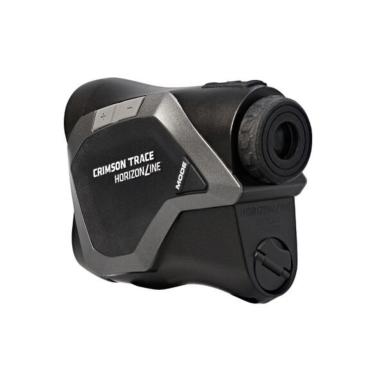

Crimson Trace Horizonline 4k Rangefinder offers precision and reliability for outdoor enthusiasts and professionals alike. Capable of measuring distances up to 4,000 yards, this rangefinder ensures accurate targeting, whether you're engaged in tactical shooting, hunting, or outdoor sports. The illuminated menu enhances usability in low-light conditions, allowing for quick adjustments without compromising performance. Crafted from aerospace aluminum and rubber overmolding, this device is built to withstand rugged environments while providing a secure grip.
Compact and lightweight, the design facilitates easy transportation and handling, making it a practical choice for field use. Advanced optics deliver high clarity, ensuring effective target acquisition even in challenging situations. Ideal for both beginners and experienced users, the Crimson Trace Horizonline 4k Rangefinder combines functionality with ease of use, making it a versatile tool for various shooting applications.
Key Features:
- EXCEPTIONAL RANGE for distances up to 4,000 yards, allowing you to target effectively from extreme distances.
- QUICK ACQUISITION technology ensures you can spot targets swiftly, even in high-pressure situations.
- BRIGHT ILLUMINATION of the menu provides easy navigation in low-light conditions, perfect for early mornings or late evenings.
- RUGGED CONSTRUCTION features aerospace aluminum with rubber overmolding, offering durability and a secure grip in any environment.
- COMPACT AND LIGHTWEIGHT design makes it easy to carry and handle, ensuring you can focus on your target.
- USER-FRIENDLY INTERFACE allows for effortless operation, perfect for both beginners and seasoned shooters alike.
- PRECISION OPTICS deliver clear visuals, helping you to spot targets even when they are partially obscured.
- VERSATILE USAGE caters to various shooting applications, making it ideal for hunting, sports shooting, and tactical use.
Technical Specifications Table
| Specification | Details |
|---|---|
| Max Range | 4,000 yards |
| Weight | 8.5 oz |
| Dimensions | 6.5" x 4.2" x 2.5" |
| Material | Aerospace aluminum and rubber overmolding |
What’s in the Box?
- Crimson Trace Horizonline 4k Rangefinder
- Lens covers
- Padded case
- Neck strap
- User manual
Customer Reviews
"Absolutely love the precision and clarity of the Crimson Trace Horizonline 4k Rangefinder. It truly made my last hunting trip a success!"
"This rangefinder has become an essential tool in my gear. The quick acquisition feature is phenomenal during competitions!"
FAQ
How does the Crimson Trace Horizonline 4k Rangefinder perform in low-light conditions?
The illuminated menu and advanced optics allow for clear visibility even in the dimmest light, making it ideal for dawn and dusk use.
What maintenance is required for the rangefinder?
Regularly clean the lenses with a microfiber cloth to avoid scratches. Store the device in a cool, dry place to maintain its functionality.
How does it compare to other rangefinders on the market?
The Crimson Trace Horizonline 4k Rangefinder stands out due to its superior range, durability, and user-friendly features, making it a favorite among serious shooters.
Similar Models
Looking for more exceptional optics? Explore our extensive Crimson Trace lineup, including the Crimson Trace 2k Rangefinder for shorter distances and the Crimson Trace Pro Rangefinder for advanced features. Discover the full collection tailored to meet your shooting needs!
You May Also Like
Here’s some of our most similar products people are buying. Click to discover trending style.










